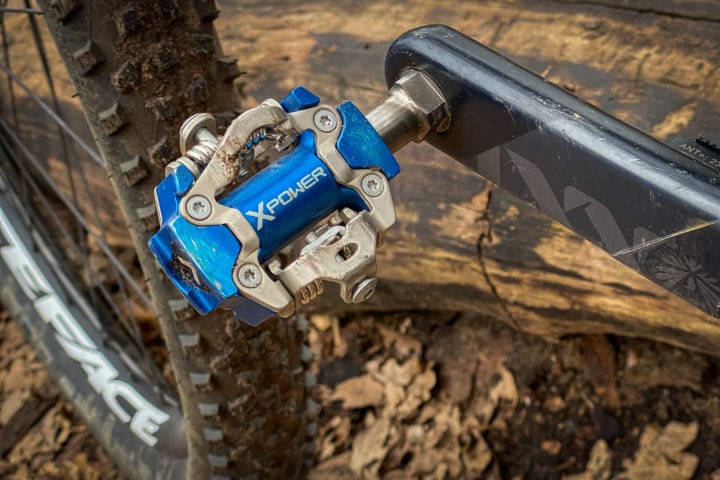
It’s been a long time since a major brand new power meter was announced, and today’s post…well…it doesn’t change that. In fact, the SRM X-Power was announced some 18 months ago, and started shipping in super limited quantities nearly a year ago. I’ve been riding it pretty consistently since last spring, albeit on a few different pairs (more on that later). Thus, I have substantially more data than I typically do for a power meter review.
While the SRM X-Power is notable as the first SPD-based pedal power meter, it’s also notable for SRM themselves: It’s really their own design. Unlike the SRM EXACT power meter, which was built in partnership with LOOK, this unit (the SRM X) is fully SRM technology. That means it does away with LOOK’s finicky to deal with design, which has been around the block in various incarnations over the last decade, first with a Polar partnership, then sold briefly by just Look themselves, and finally, with the SRM EXAKT road pedals a few years back.
But again, these pedals aren’t that. SRM says their internals are different – and one only needs to install them to see that. There’s no funky tools required like of years past, nor any weird setup procedures. Just install, do a few-second one-time setup step, and you’re done. It doesn’t matter whether you’re riding SPD pedals for road or off-road purposes, the functionality is identical. My testing covers both, though skews slightly more road-focused simply because I lack meaningful mountain bike trails where I live (and currently can’t travel to places with better trails).
In any event, once I’m done with this loaner set for this review, I’ll box it up and send it back to SRM. Just the way I roll. If you found this post useful, consider becoming a DCR Supporter which makes the site ad-free, while also getting access to a mostly weekly video series behind the scenes of the DCR Cave. And of course, it makes you awesome.
Unboxing:
The SRM X-Power unit comes in either a dual or single-sided option. For this review, I’m testing the dual-sided version. Whereas if you buy a single-sided variant, you’ll get a second identical pedal but without any electronics inside it.
Crack open the box and you’ve got the pedals looking back at ya:
Inside the box there’s a slate of parts. Essentially there’s the pedals themselves, two long micro-USB charging cables, two charging pods (which use micro-USB), and cleats. Oh, and a little paper manual.
Here’s a closer look at those parts. First, the pedals:
Then we’ve got the cleats and charging pods:
Those pods attach to the extra-long micro-USB cables, which are 3 meters long:
And that’s all there is to it. We’ll get them installed in the next section.
(Note: You’ll see two different sets in the review. The black set was my first pair I started on last Feb/March, and then after some issues I received a new set last summer, which was blue. More on those issues later.)
General Use Overview:
First up is getting the SRM X-Power installed, and I’m happy to report that unlike the SRM EXAKT road pedals, the SRM X-Power is just like every other pedal: Simply install it, firmly. There’s no special installation tools or such here like the EXAKT or previous LOOK-based pedals.
Because the spindles house the electronics, you will need to use a pedal wrench (as opposed to an Allen wrench into the spindle). But I suspect most people considering a pedal-based power meter will have a pedal wrench. If not, they cost $15-$25 and you can also use it for breaking blocks of ice up, once partying resumes.
You’ll start by just thumb tightening them on. Then you’ll want to install the pedals to 30Nm (22 ft-lbs) of torque, which is basically tighter than you probably normally install pedals. Not breakage tight, but when they feel snug, go a bit more. Technically speaking pedals are designed to automatically tighten over time as you use them.
Once installed, you’ll crack open the smartphone app, which runs through a two-second calibration process. First, you enter your crank length in (which is normal for all pedal-based power meters), and then you’ll do a zero offset with no load (also normal).
Then it needs to determine the exact installation ‘angle’ of the spindle. While other pedal-based power meters figure this out automatically, SRM has gone with the one-time procedure. Given it only takes a second or two, it’s not a big deal. Simply stick your drive side pointing down, and then tap to confirm:
And with that, you’re done.
The SRM X-Power pedal has a claimed weight of 172g per pedal, and my handy-dandy scale seems to confirm that:
Ironically, these are actually lighter than the PowerTap P2 pedals for example, which are 200g. Though, they’re heavier than the Garmin Vector 3 (161g/pedal) and Favero Assioma (150g/pedal). Of course, none of that really matters if you really need SPD compatibility, since the others don’t offer that.
The claimed q-factor on them is 55mm, which seems the same as my rando pair of Shimano SPD pedals I’ve got floating around here. The Q-Factor is simply the distance from the crank arm to the center of the pedal. Some pedals have to artificially lengthen this to account for electronics. While some with injuries have reason to worry about q-factor, the reality is most don’t. Your q-factor changes between most bikes. For example, your road bike is different than your mountain bike (quite considerably), and that’s also different than an around-town/commuter bike you have. And different yet again to any indoor smart bikes you might be lucky enough to have. In other words – don’t fret it, and certainly not here.
For the above comparison, I’ve placed the tiny LED portion beyond the edge of the wood, because that extends through your crank arm, thus isn’t counted here.
And the stack height is 10.5mm on them, which is from the center of the pedal to the base of the cleat (effectively the underside of your shoe). Since there isn’t an easy way for me to take a photo of that, here’s something similar.
The batteries on them are rechargeable, and use these little contact points to charge them with the two included charging cables. Somewhat oddly however, they don’t include a dual USB charger in the box. While normally I wouldn’t give much thought to that, Favero does include a handy dual-USB charger in the box (and they cost half as much). Plus, the obvious being that you usually charge both pedals at the same time, so now I had to go off and find two wall chargers (yes, I could just steal the Favero one, but that’s not the point).
On the bright side, the length of cable included is crazy long, so it’s easy to just leave your bike on a trainer or somewhere else and run the charging cables to them.
The only downside is they are a bit finicky to get exactly onto the charging contact point, I wish they just snapped to the correct place like the Favero Assioma ones. But once on there, you’ll get the light on the end of the spindle illuminated:
Now – for arguably the biggest issue with the SPD X pedals: Battery life.
And things are gonna get messy in this section.
Officially the current website claim is “Up to 30h runtime (standby power draw is 2-5% per day)” – and at first your brain says ‘30 hours’, ok, not spectacular, but basically charging once every 3-6 weeks for most people. Except one problem: That standby claim is what kills ya. That’s 2-5% per day, and I can pretty confidently state it’s definitely closer to 5%/day (and I’ve been using the SRM app to track that). So a week of standby in between rides knocks off 35% right there (7d*5pct = 35% off). Two weeks brings you down 70% total. Leaving you basically 10 hours of riding time between two weeks.
In other words, you’re gonna charge these a lot. Roughly every two weeks. It took me quite some time to figure this out – and my experience seems to match countless others based on comments people have left, friends of friends, and the TrainerRoad Forums. So while it’s plausible you could do a single 30hour ride on it (not my cup of tea), the reality is for most of us you’re looking at charging every other week.
HOWEVER…….
There’s some good news here soonish. First off, is that through some software battery improvements delivered to units via firmware updates has extended the battery life to 35 hours. But more importantly, turns out my unit from last summer is technically a Gen 1 SRM X-Power set. Whereas what they’ve been producing more recently is a Gen 2 set, which has an improved battery adding another 10 hours of ride time. However, beyond that the company says they’re actively working on another update that’ll essentially eliminate the standby battery burn, down to negligible/normal levels (a fraction of a percent a day).
In any case, once you’re ready to ride you’ll pair it up to your head unit via either ANT+ or Bluetooth Smart. Both are supported concurrently. I’ve paired it successfully to pretty much every bike computer and wearable released in the last few years. No issues across the board. For all capable units I’m using ANT+ as the preferred connection type, so you get extra pedaling metrics (but not the official Cycling Dynamics stuffs, more on that in a second).
From an ANT+ standpoint, the unit broadcasts power balance, ANT+ power pedal balance, ANT+ pedal smoothness, and ANT+ torque effectiveness. Still, here’s a link to a Garmin Connect activity recorded via via ANT+:
Now, there’s actually a toggle within the app for so-called Bluetooth ‘Zwift mode’, which basically tells Zwift how to handle the dual pedals. That’s because despite power meter pedals having been around for just shy of a decade now (and about half of that with Bluetooth), Zwift hasn’t figured out how to implement multi-channel pairing like everyone else. That means it’ll only pair to one side or the other.
You can see this in Zwift, first in normal mode where it enumerates both pedals:
And then in Zwift mode, where only the right side SRM pedal shows:
Favero has essentially the same issue with Zwift, though, Garmin has managed to channel the data in correctly so that Zwift isn’t any wiser. Note that we’re not talking about power balance in Zwift (they don’t support that either). Instead, what will happen is that Zwift will only see data from one power meter side, not both. So if your pedal’s battery power runs out, it can’t gracefully failover like it can for Vector.
The pedals also support standard zero-offset commands from head units like Garmin, Wahoo, and more (effectively a calibration, but that’s technically a different term/function). You can perform both via ANT+ or via the smartphone app over Bluetooth Smart, using a compatible head unit to zero-offset your unit. In general, I do this before every ride, as a quick validation that things are working as expected.
You’ll trigger a calibration just like you would other power meters by going into the ‘Calibration’ comment on your head unit, and by ensuring your drive-side crank arm is at the 3’oclock position (forward).
Note that I have seen numerous cases where the left pedal is a bit sleepy upon wake-up. In the SRM system, the right pedal is considered the primary/master, and I often see that it takes a bit longer for the left pedal to slumber awake. As such, while it’s still waking up, it’ll fail a calibration test. Alternatively, you can add the power balance data field to your bike computer, to validate you’re getting power from both sides. Or, you can crack open the smartphone app, as I did yesterday when it was sleepy. Within a minute it had fully woken up and was good to go. Sometimes it’s instant, yesterday it was tired. Not sure why.
Now, if your battery dies mid-ride, it’ll depend on how you’ve paired for whether or not power will continue to broadcast. For ANT+, the pairing happens via the right pedal only. That means you’ll lose all power if you lose the right pedal, but if you lose the left pedal it’ll detect that loss and simply double the right-leg power (and all is basically fine). Whereas in Bluetooth, you’ll pair each side individually, and thus, it’ll actually detect the loss and double the remaining leg’s power. Here’s a little graph from the manual:
Mind you, this specific ANT+ vs Bluetooth failover functionality is purely a function of how SRM has implemented. Other companies, such as 4iiii, do seamless failover on both protocols, so it doesn’t really matter which side you lose.
Finally, within the SRM X-Power smartphone app, they do have a handful of other data pages with more information. For example, you can look at detailed diagnostic information if you want to.
Though, I’m not super clear on the lifetime hours here, since I’ve got far more hours on these pedals than that – as I’ve been using this set since last summer on my main road bike. Maybe that’s since the last firmware update or something.
There’s also the ability to see power, torque, and balance data in real-time, though I suspect you won’t actually use this beyond a super quick check:
Finally, for a bit of non-tech stuff. When it comes to adjustability, you can adjust the spring force using a 3mm Allen key, which is done on the rear of each pedal binding.
I didn’t have any issues with tension, durability, or anything else in that realm in using them over the last year. However, I did have issues with balance on the first pair of pedals I tried last Spring (2020), which in turn lead to issues with accuracy. SRM believes that pair was part of an early/initial factory run last January/February (2020) and they have since changed a few items that may have caused that issue in first production run units. The unit I’ve been using from summer 2020 till now (March 2021) is also a normal production run unit, but some 6 months later.
Power Meter Accuracy Results:
I’ve long said that if your power meter isn’t accurate, then there’s no point in spending money on one. Strava can give you estimated power that’s ‘close enough’ for free, so if you’re gonna spend money on something it shouldn’t be a random number generator. Yet there are certain scenarios/products where a power meter may be less accurate than others, or perhaps it’s got known edge cases that don’t work. Neither product type is bad – but you just need to know what those use/edge cases are and whether it fits your budget or requirements.
As always, I set out to find that out. In power meters today, one of the biggest challenges is outdoor conditions. Generally speaking, indoor conditions are pretty easy to handle, but I still start there nonetheless. It allows me to dig into areas like low and high cadence, as well as just how clean numbers are at steady-state power outputs. Whereas outdoors allows me to look into water ingest concerns, temperature and humidity variations, and the all-important road surface aspects (e.g. vibrations). For reference, SRM has a claimed accuracy rate of +/- 2.0% for the SRM X-Power pedals.
In my testing, I generally use between 2-4 other power meters on the bike at once. I find this is the best way to validate power meters in real-world conditions. In the case of most of these tests with the SRM X-Power pedals I was using these other power meters or trainers concurrently over the course of the last year:
4iiii Precision Pro dual (on XX1 crankset on mountain bike)
Elite Direto XR Smart Trainer
Elite TUO Smart Trainer
Quarq DZERO (SRAM crankset on road bike)
Quarq DZero (XX1 crankset on MTB)
PowerTap G3 hub (road bike)
Tacx NEO 2T Smart Trainer
Wahoo KICKR V5 Smart Trainer
There are undoubtedly other trainers that aren’t top of mind right now, but basically since this has been mostly on my road bike since last February, it’s pretty much been on every trainer I’ve tested since then (and, you can see that data in most of my trainer reviews over the last year).
And just in case it’s not easily noticed, I’m testing across two bikes, both my road and mountain bike.
First, let’s look at a Zwift Ride compared to a Quarq DZero and a Tacx NEO 2T. This was on a looped course, with a solid sprint thrown in each loop. Otherwise, the power hovered in the ~300ish watts range, as I was on a group-ride, so you see the constant shifting staying with the group. Here’s that data set:
Overall, the numbers are very close actually. In theory, you’d want the SRM X-Power pedals to be highest, and the Tacx NEO 2T to be lowest, and the Quarq to be slightly below the SRM X-Power (due to the way drivetrain losses are handled). Though practically speaking, once you account for the variances in claimed accuracy rates, in some cases it ends up being a wash – like in this case. So let’s zoom into a few chunks.
Here’s a steady-state section, followed by a 950w sprint, followed by steady-state again. Notably, the below chart has *no* smoothing applied. As any regular connoisseur of power meter data might know, that tight alignment between three power meters on a 950w sprint is actually somewhat rare and incredible. Seriously, you rarely see data this close from three sources – especially across sprints.
And the same is true if I look at all the remaining sprints. However, let’s zoom back out a bit – and I want you to notice the green line that I’ve highlighted, seemingly dipping a bit here and there:
Curiously, I then scrolled down in the data set, and you can see that each of those yellow dips below, aligns to a dropout of the left side, seen in the graph below. Essentially, there’s a connectivity issue between the left side and the right side.
And this is an example of what happens when the battery starts to get low – you see these slight connectivity issues like this. Brief drops for a split second. Or literally, actually just one second.
However, I then went back and pulled set after set after set of trainer rides, to see if I could find examples of this elsewhere, and couldn’t. So it’s fairly rare. Not here in this Zwift ride:
Nor this ride:
Or this ride:
Or this ride (note – the color changed on this one, green here is the Elite Tuo, the SRM X-Power in purple matches beautifully to the Quarq & PowerTap G3 hub).
In fact, while we could dive into the nuances of all those rides, they all tell the same story – near perfect alignment with the pile of other power meters and trainers I’ve been using. Those rides date back as far as September, and I’ve included them to illustrate some of the longevity here. Also, I’ve got the data, might as well flaunt it I guess. Otherwise it just goes to waste sitting on the DCR Analyzer – never getting its moment in the sun.
However, there is a singular ride that’s an exception to this rule, from last month. This was a TrainerRoad ride with one-minute intervals and then some longer steady-state intervals. Here’s that data:
What you see here is sorta two stories. Initially, during the warm-up, things seem mostly fine. A touch low, but not overly concerning yet. However, during the work interval for all of the 60-second intervals, the SRM X-Power seemingly undershoots every single interval. Yet later in the back half of the ride, it seems more or less fine (a hair low, but not overly concerning).
However, this is where on a dual-sided power meter, you can quickly suss out what’s likely going on. And all one needs to do is look at the left/right data. And you can see quite clearly that the right side pedal is reading substantially lower on each of those sets. As to why; that’s anyone’s guess. Is it a temperature compensation thing? Unlikely – since this was in the middle of a snowstorm, and the bike had been in the exact same spot for weeks. Is it just a bad offset on that side? Perhaps, but that doesn’t explain why it stabilizes later.
Given this is the only example I can find of it in piles and piles of data (including other short interval workouts), I’m not overly concerned about it. But I figured I’d mention it.
So, let’s finally go outside. Here’s one of my usual test loops outdoors. It’s mostly good quality roads, but it’s also got some nice long brick sections too, just to see how it handles vibrations. This is compared against a PowerTap G3 hub and a Quarq DZero power meter. Here’s that data:
As we can see, the data is fairly close together, with the PowerTap hub properly below the others – further down the drivetrain, as expected.
Here’s some steady-state riding, followed by a lazy sprint. Unlike the earlier crazy-close indoors sprints, this one shows a bit more normalcy and separation between them. That’s common due to slightly different transmission rates and alignment of the data on multiple head units.
Since we haven’t done so yet, let’s take a quick look at cadence. There’s no cadence magnet installation here, it just does it all internally. And all seems well here. All of these agree as long as I’m pedaling:
We see a slight bit of difference in how they handle brief soft-pedaling moments. If I remove the smoothing entirely, you can see each of the three units interprets my soft-pedaling slightly differently:
It appears the SRM X-Power goes a bit lower than the others, though I’m not sure if there’s any real-world difference between it calculating my soft-pedaling at 35 vs 40 rpm. The second I apply normal pressure, you see all three instantly agree again.
If we look at the power curve for this ride, we see the SRM & Quarq pretty close, with the PowerTap G3 lower. Perhaps a bit lower than I’d prefer by a few watts, but maybe my drivetrain was exceptionally dirty that day or something.
Next, another outside road ride, before we go off-road. In this one, the SRM X-Power s the line labeled ‘Wahoo RIVAL’, in blue (compared to a Quarq DZero and a PowerTap G3). Here’s that data set:
I’m not gonna hash through the above one again, because frankly it’s boring and spot on. Cadence looks spot on too:
And the power curve looks beautiful too:
Next, let’s head off-road. Now, living in the Netherlands there’s only so much variety in off-road terrain – and none of it is crazy rocky. I would have loved nothing more than to give you piles and piles of off-road rocky data. But alas, with current travel restrictions, that’s simply not possible. Thus, you get more rooty than rocky, for my mountain biking.
First, some loops around a local cyclocross circuit. In this case I have comparative data to a Quarq XX1 DZero power meter, as well as a 4iiii Precision Pro dual-sided crankset. However, the last few rides I’m having some sort of battery or connectivity issue I’m troubleshooting on the 4iiii, so we’re gonna toggle off that data because the drop-outs skew everything. I think I’m close to solving it (pretty sure it’s the battery caps).
Now, if you’ve ever looked at mountain bike or cyclocross power data, you’d know it’s largely a jumbled mess. Sure, if you’re climbing on a mountain bike for 30 minutes – that’s easy and clean to look at. But given the largest climb I have around here is approximately 57 seconds, that’s not the kinda data you’re gonna see. This is:
Now for this ride I had just moved the pedals to the bike – and indeed, you see that first 20ish minutes or so the green line of the SRM X-Power is notably different than the Quarq. While I had done some settling sprints before the ride, you can see it’s clearly still settling a bit. But as the ride goes on, the two get closer and closer together…except when they’re not.
And that’s the challenge with only two power meters (and why I have a third on there), it’s just hard to know who is right. Let’s look at this section here. Mind you, I’ve smoothed this at an astounding 20-second smoothing rate, just so you can make some sense out of it.
This is without smoothing, and what it actually looks like:
And ironically, this is the rare scenario where the unsmoothed data makes it slightly easier to see what’s going on. In a nutshell, both units are actually very very close, but the Quarq appears to spike slightly higher each time to a surge than the SRM X. Response time is near identical, but the Quarq believes (perhaps correctly, I have no idea) that these surges are a bit higher. And since the surges are substantial – 700 to 900w, that skews the data considerably more once smoothed.
Typically speaking when looking at power meter data and very short duration surges in that 700w+ range, you’re going to see differences there. These surges only last 1-3 seconds. So the averaging and 1-3 second differences is actually really screwing up that smoothed chart. So much so that I don’t think we’re looking at an inaccuracy issue per se, but rather the complexity of this type of riding and how different brands decide to deal with smoothing (all brands have to smooth to some extent, where they draw the line is what matters).
So let’s look at another off-road mountain bike ride – this one from yesterday. Again, the same surge and punchy trails that I have access to. Very rarely are there long and stable sections. Here’s that data:
And again, above smoothed at 20-seconds, we see the same thing – the Quarq appears to be consistently higher and above the SRM X-Power, even for some longer duration stretches. For this ride, calibration was done after the bike had cooled for about 15 minutes outside, and then again about 24 minutes into the ride. Here’s a section right after that second calibration, first with smoothing:
And then without:
Umm…yeah. Good luck with that data.
Essentially, it’s just like above – the Quarq appears to shoot higher than the SRM X-Power in most of the quick punches.
But wait…let’s pull that 4iiii data back in. In this case, as part of my battery cap troubleshooting, I actually pulled the battery on one side, letting it run as a single-sided unit. That cleaned up the dropouts, and gives me a third source (albeit single leg only). Still, it’s something I guess:
It seems to align more closely to the SRM than the Quarq, but again, it’s just doubling a single leg, and thus you’ll see less accuracy in that method.
All of which is to say, off-road power meter data is really hard to analyze from an accuracy standpoint – especially punchiness. Each brand has to apply considerably more data processing to sort out bad data from good data, effectively trying to figure out if that spike in data is your surging around a corner, or just the impact of a rock/root/whatever on the pedal, or a big drop. And it appears based on the data that I have, that SRM is applying a bit more smoothing off-road, thus minimizing the spikes slightly more and making it appear lower than the Quarq.
Overall, based on what I see, the SRM X-Power pedals are super accurate on road and indoors, with only a single ride in the last 7 months or so that isn’t perfect. Same goes for cadence data. Once you venture off-road, it appears that the SRM X-Power is mirroring the Quarq and 4iiii, however, applying a bit more smoothing than Quarq is – which tops off some of the brief 1-2 second surges.
(Note: All of the charts in these accuracy sections were created using the DCR Analyzer tool. It allows you to compare power meters/trainers, heart rate, cadence, speed/pace, GPS tracks and plenty more. You can use it as well for your own gadget comparisons, more details here.)
Summary:
The SRM X-Power pedals are notable for a few things. First, they’re the only pre-built SPD power meter option on the market today. While you can DIY marriage yourself a pair of Favero Assioma pedals with SPD pedal bodies, that does require some how-to, and the understanding that you’re voiding your warranty (and likely modifying your shoes too). Second, they’re notable because this is SRM’s tech, and not Look’s – thus they don’t follow the same fiasco that was the SRM EXAXT road pedals which required super finicky installation and were generally a mess to get accurate. Whereas with these SRM X-Power pedals, the installation takes mere seconds, doesn’t require special tools, and ultimately the accuracy ‘just works’.
Of course, getting ahold of the pedals is tricky. They’ve mostly been out of stock on both sides of the pond for quite some time. Shipments are of course going out, but basically to people on a waiting list. They’re priced at $1199USD/1190EUR (including VAT), which is expensive – but honestly, given there’s no other options on the market today, it’s what I’d expect. A pair of road-focused Garmin Vector 3 pedals is $999, and that’s roughly where the PowerTap P2 pedals were sold up till they were discontinued last month. Of course, Favero is considerably lower for their dual-sided solution, but that’s road-focused unless you want to roll your own SPD pedal install. So while the $1,199 price is high, I do think it’s fair for an easy-to-use and more durable mountain bike pedal (which can also be used for road, if you wish). Note that I reached out to SRM today, and they noted that they recently brought online a second production line and facility in Italy, and are ramping up production there.
Now, the main downside to the SRM X-Power is clearly the battery life aspects. Mainly the standby battery burn. Upwards of 5%/day in standby. Meaning you’ll burn through 1/3rd of your battery each week. And with only 30 hours to begin with (optimally), that’s a lot of charging. However, it does sound like this will be remedied to more acceptable levels in upcoming hardware updates, which should get rid of the standby issue entirely, while also boosting ride time battery life.
Ultimately, I’d like to see SRM continue down this power meter path. Namely because I think if they can solve the stock/supply issues, it represents a viable product segment for them – especially if they expand beyond just an SPD pedal, and perhaps look at other pedal types. Certainly that’s what SRM EXAKT on Look KEO is for in theory, but in execution – not so much. And finally, while SRM has mostly lost the crankset power meter market due to their pricing, the SRM X-Power is actually reasonably priced relative to the market options – thus, it’s also a trend I’d like to see continue.
With that – thanks for reading!
FOUND THIS POST USEFUL? SUPPORT THE SITE!
Hopefully, you found this post useful. The website is really a labor of love, so please consider becoming a DC RAINMAKER Supporter. This gets you an ad-free experience, and access to our (mostly) bi-monthly behind-the-scenes video series of “Shed Talkin’”.
Support DCRainMaker - Shop on Amazon
Otherwise, perhaps consider using the below link if shopping on Amazon. As an Amazon Associate, I earn from qualifying purchases. It doesn’t cost you anything extra, but your purchases help support this website a lot. It could simply be buying toilet paper, or this pizza oven we use and love.

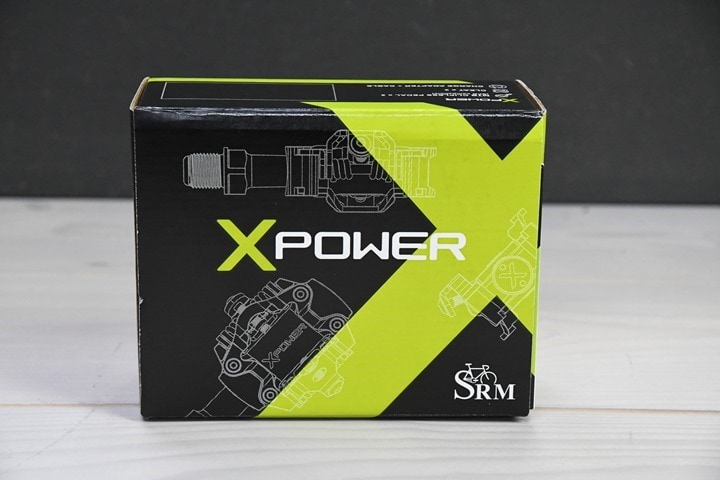
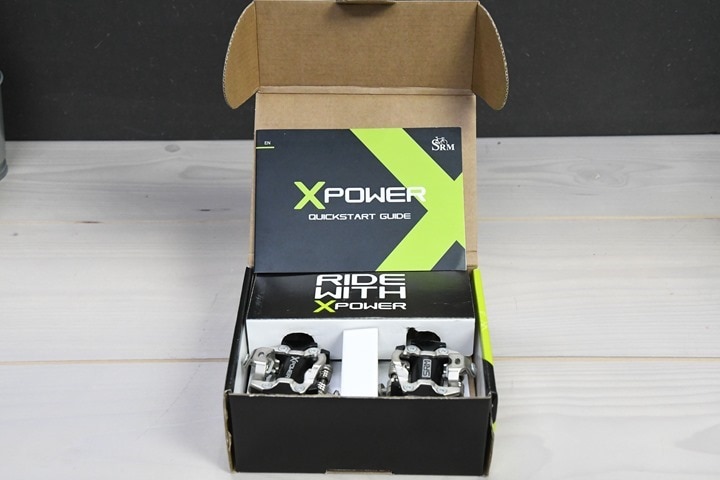
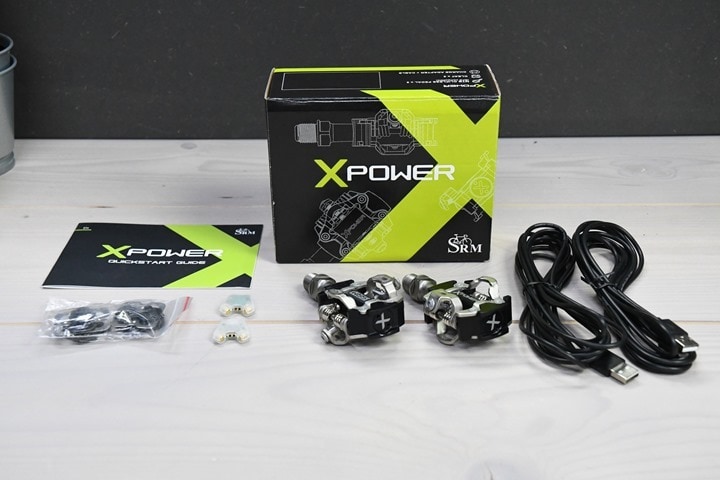
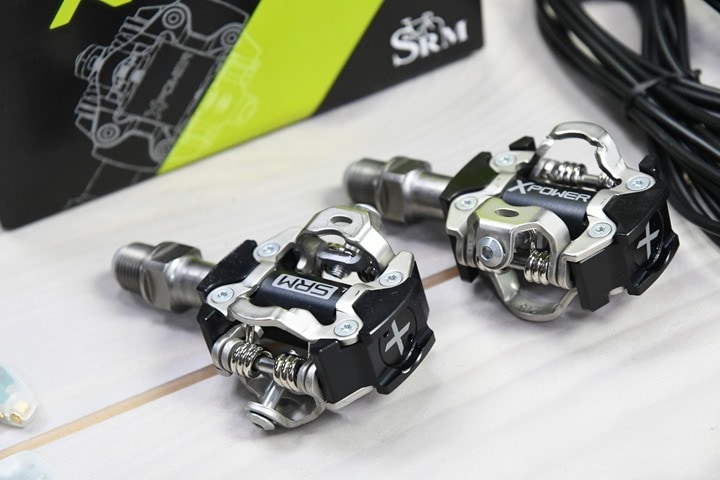
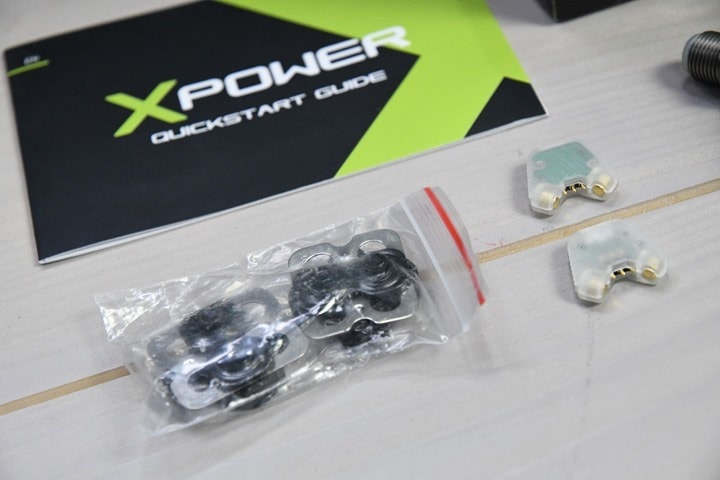

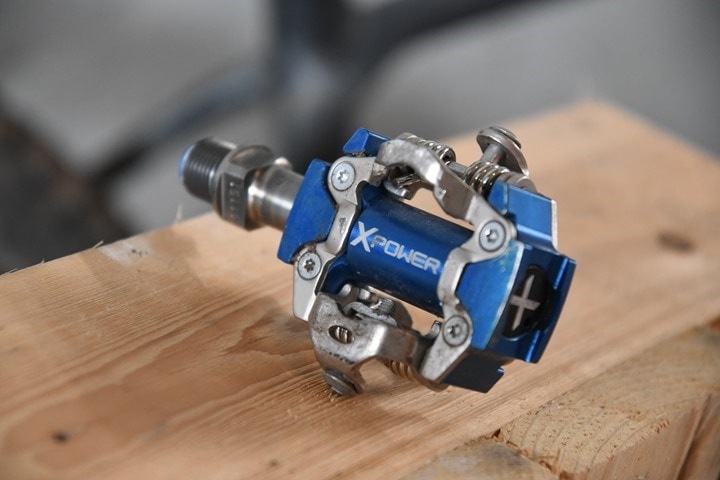
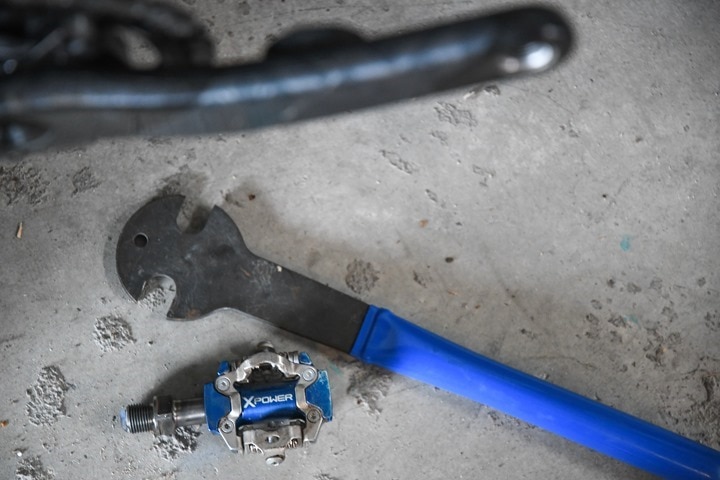
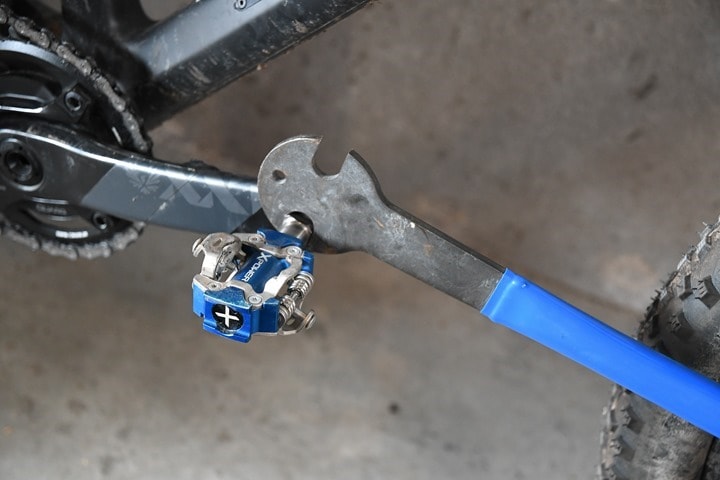

![clip_image001[6] clip_image001[6]](https://media.dcrainmaker.com/images/2021/03/clip_image0016_thumb.png)
![clip_image001[8] clip_image001[8]](https://media.dcrainmaker.com/images/2021/03/clip_image0018_thumb.png)
![clip_image001[10] clip_image001[10]](https://media.dcrainmaker.com/images/2021/03/clip_image00110_thumb.png)
![clip_image001[12] clip_image001[12]](https://media.dcrainmaker.com/images/2021/03/clip_image00112_thumb.png)
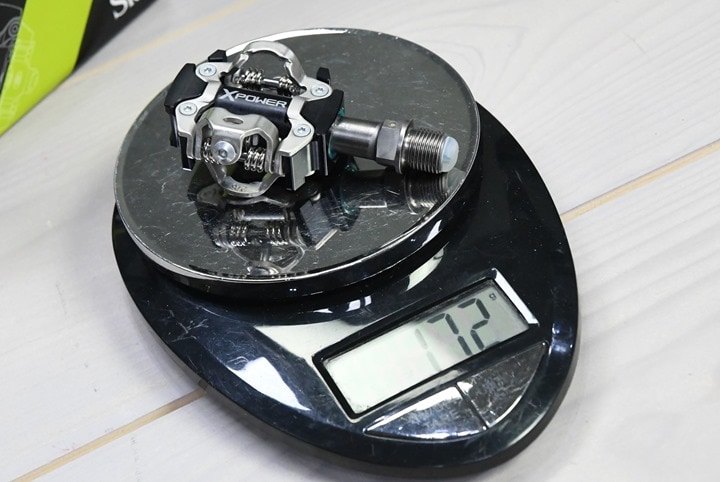
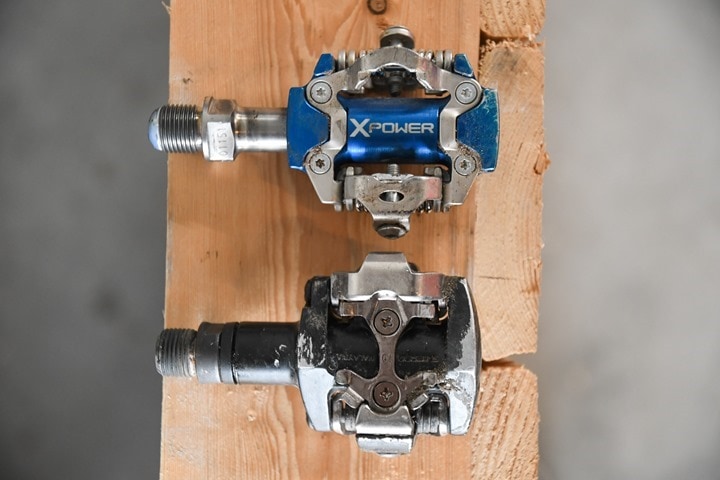
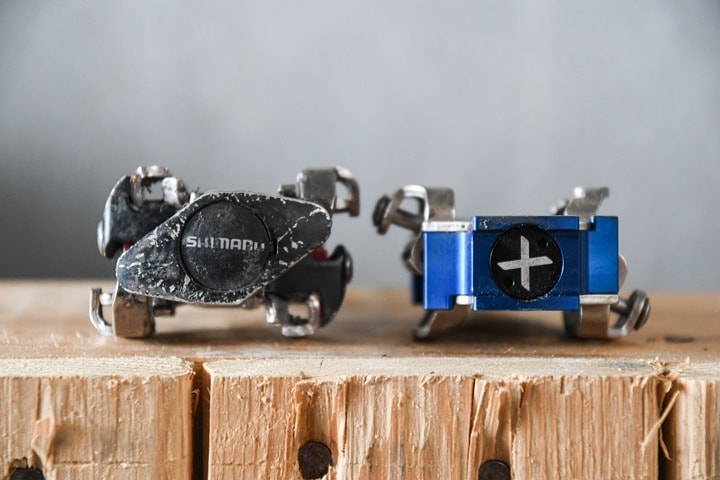
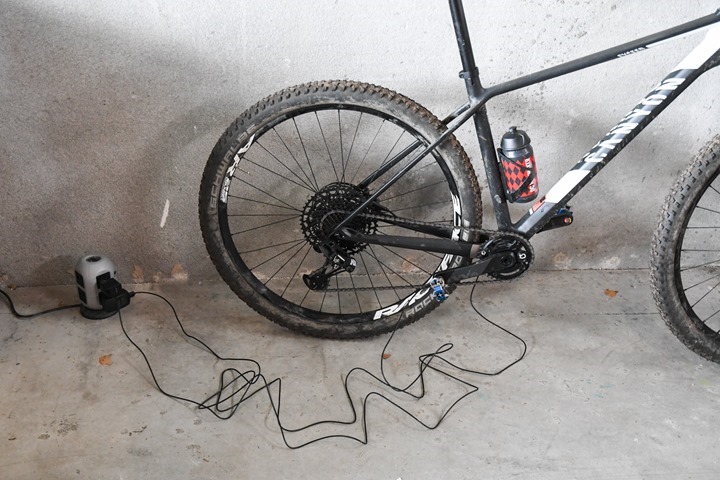
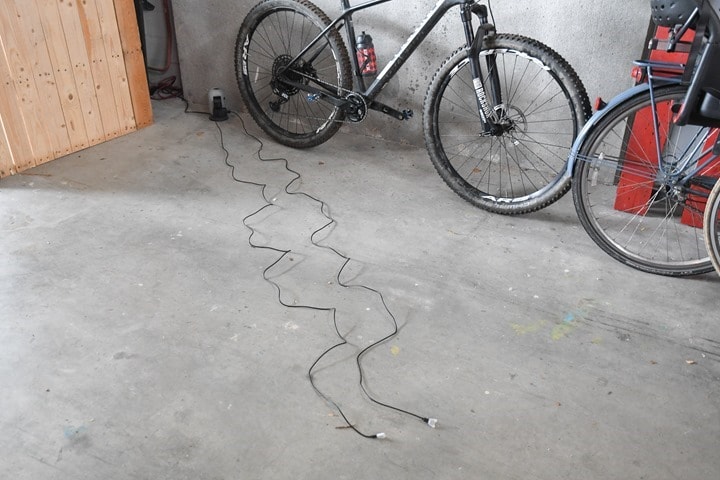
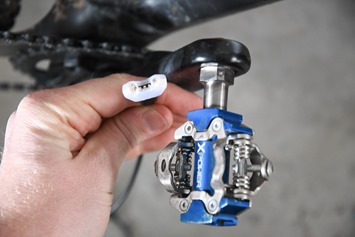

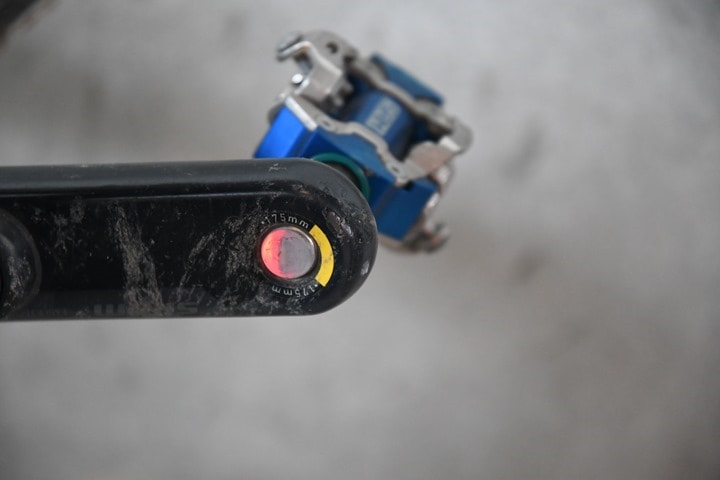
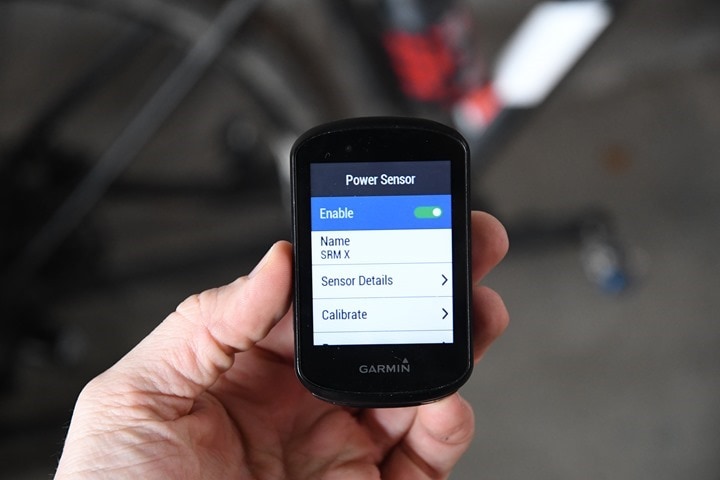


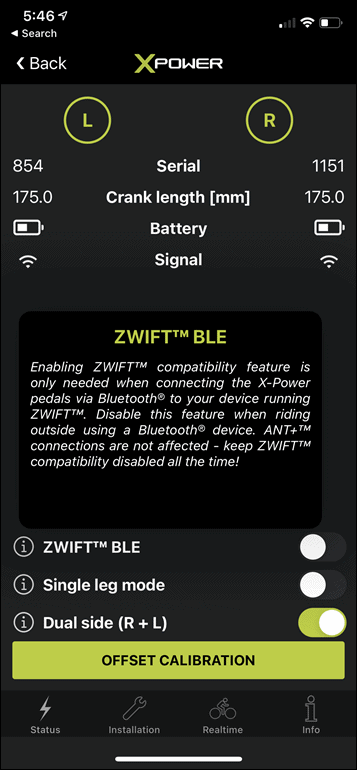

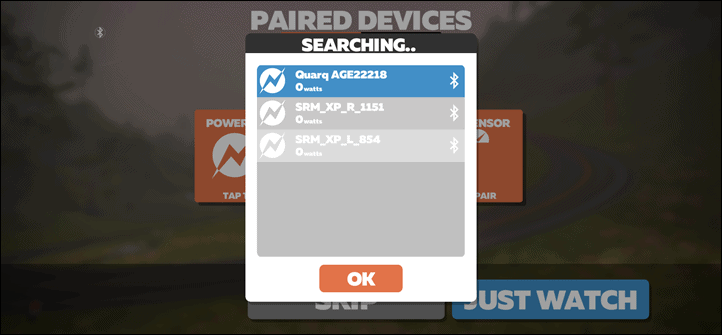

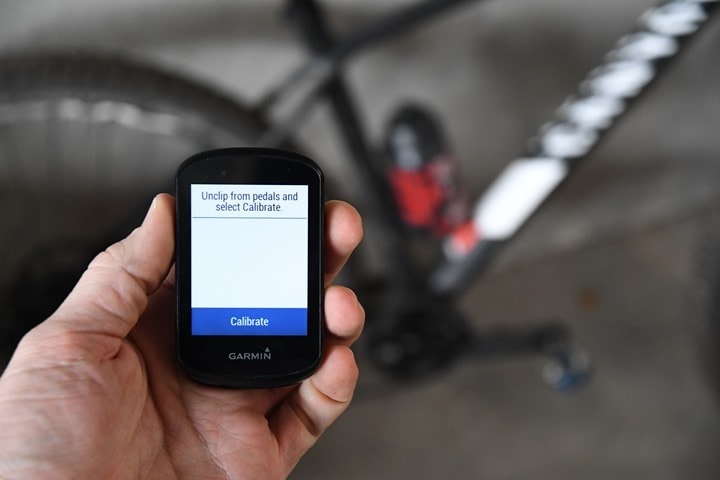
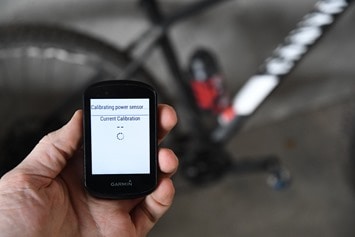
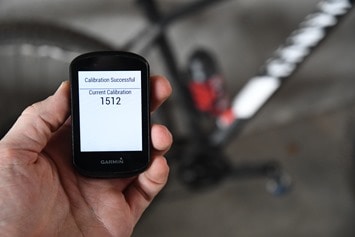

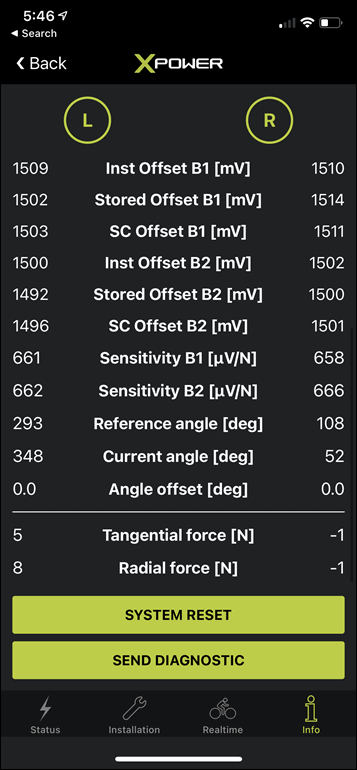
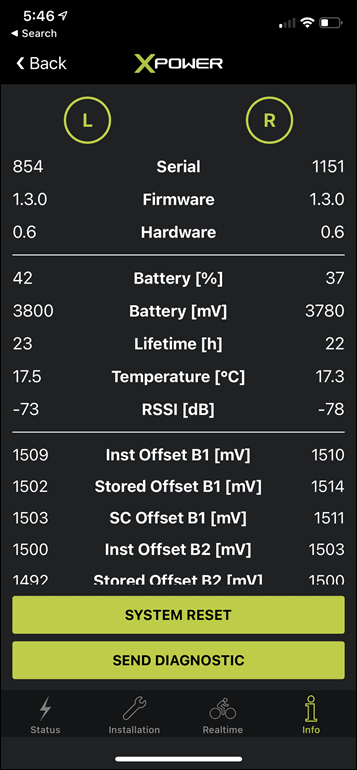

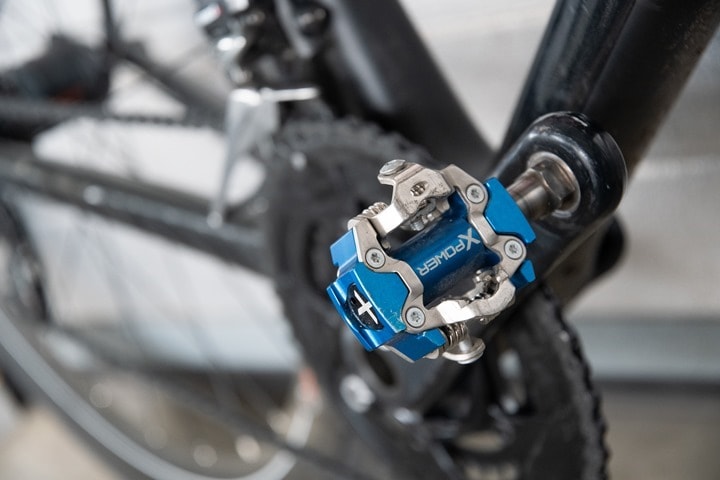

























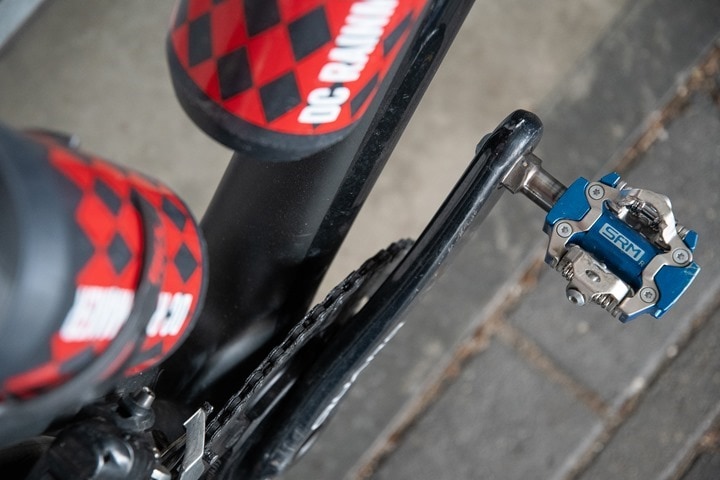





















I’m wondering how well this will last when it’s been caked in mud, hit by multiple tree roots and rocks. Calibration is a concern as well as longevity.
So far seems pretty good.
I chatted with SRM about it, and they noted that they haven’t seen a single broken/damaged spindle yet come back. In pedal based power meters, it’s all about the spindle design. So the theory being you can destroy a pedal body (ideally not, but for sake of argument, say it happens), but that it doesn’t damage the spindle itself, which is where the electronics and strain gauges are.
Thus most power meter companies allow you to swap out the pedal bodies if need be, saving the spindle. So the fact that they haven’t (as of this afternoon when I asked) seen any broken/damaged spindles yet is pretty encouraging for something that’s been around a year now.
Has any had any experience with the FLAT pedal version?
I’ve been running their flat pedals on my MTB for about a year now. Aside from swapping out the pins for something with better grip, I have no complains.
Brian, I’ve been trying to figure out which types of pins would work with them – any recommendations? Thanks!
This isn’t the PM review we’re waiting for! ;-)
What is the PM review we’re waiting for? Are there Vector 4’s floating around and there’s just not a lot of noise about them so far? Or is it another one?
Wahoo Speedplay PM is my guess.. 16.3. we will know more.
Yeah, Wahoo/Speedplay PM. This SRM…no one cares about.
link to aws1.discourse-cdn.com
I disagree. I have little interest in Road only PM. I am not going to invest 1,000’s in a PM that isn’t transferable between my Fatbike, MTB and Road Bike. I always have used SPD’s and was facing having to get new shoes and was always concerned about sand and mud.
This development really helps, I am happy to use an SPD on all bikes. This is a cost saver.
I get your point. You could for example also buy 3x the AXS PM Spider for the 1200. That would be my solution ;) But the Wahoo Speedplay is rumored to be 600€, which would be a nice entry point… And not every one likes SPD pedals on road bikes, so choice is always welcome (especially for SpeedPlay adopters).
“when they feel snug, go[t] a bit more. Technically speaking pedals are designed to [will] automatically”
“the right side pedal is read[y]ing substantially lower”
“to more acceptable levels in upcoming [hardware] updates”
Do you mean firmware?
Thanks!
No, actually both hardware and firmware. Internal hardware changes made in-line in manufacturing will significantly impact battery (positively). There won’t be a new product or anything, just simply done behind the scenes.
Favero-Xpedo hack is way cheaper! I don’t see hitting 1.200$ pedals by rocks and roots.
On the other hand, I’m very interested in a SPD-SL road pedal powermeter.
But the SRM is designed to withstand hitting rocks and roots. The Favero is not. The cylindrical part is just plastic and is designed for road use. If the SRM breaks, you can warranty it. If the Favero breaks, you are (probably) out of luck.
I’m not against the Favero (or for the SRM). I struggled with deciding if I should get either of them. Decided to wait on the SRM due to battery and price. Really wanted to do Favero hack but the cost of doubled-sided power plus new pedals and no warranty held me back. I’m also hoping Favero is working on a true SPD pedal.
Hopefully by the end of 2021 there are a couple good options for SPD pedals.
I have been riding these for four months consistently. This review is exactly accurate. The product quality is very good, but the battery life needs work as does the app and sleepy left pedal issue. Overall its a great pedal from a pioneering company that merits your full consideration.
if you are riding gravel or mtb of course, this is an excellent product and your only choice. I am very satisfied with the product and SRM support. Thank you Ray for another insightful review.
Good to hear your experience mirrors mine! Cheers!
“if you are riding gravel or mtb of course, this is an excellent product and your only choice.”
Only pedal choice. My Quarq/XX1 crankset has been rock solid on my gravel bike.
I will echo this, only pedal based power. My 4iii crank power on my mtb has been really solid. Zero issues. Plus, it is way cheaper.
After a few years of using mtb power,I am not sure its really useful other than populating my garmin training load stuff. Mtb and road are just too different.
Thanks for the review, Ray!
Finally there’s an actual SPD pedal-based powermeter. I wonder why other companies (Garmin & Favero) don’t make similar products? Are there some patents that prevent them from using SPD design?
My understanding was the Shimano SPD (MTB side) patent expired about two years ago, which is what led to both the SRM X-Power and IQ2 SPD options being announced.
I’m not a patent lawyer though.
Also, I’ve got the data, might as well flaunt it I guess. Otherwise it just goes to waist sitting on the DCR Analyzer
Who’s waist is it going to?
Thanks for the review, I’m not sure I like the current battery life. I’ve got a Quarq and its been on my bike for 2 years with one battery change.
So my takeaway is something like this: we know that Favero is less expensive and readily available, but requires hackery and voids your warranty; SRM is plug-and-play, but hard to obtain, more expensive, and will have battery awkwardness until a Gen 3 version ships at some unspecified future date.
Sigh. I was hoping they’d make this an easier decision for me…
Thanks so much for covering the SPD PM niche! How else will us boomer retrogrouches wearing SPD sandals monitor our training stress balance? ;^P
Ugh, not keen on the SRM premium. Based on the hack clearly Favero could indeed do it once they figure out how to slim their electronics pod.
Thanks Ray for the great and objectives reviews, as always.
As far as stock in the US, about 3 weeks ago, I saw the single sided pedals was available (SRM USA) for about 2 days before being sold out. So it does give me a ray of hope.
Hey, so someone last week on reddit replied to my inquiry about SPD pedals and they told me to wait a couple weeks because a new pedal based off road option may be just around the corner.
Ray, without giving specifics can you tell me if I can be hopeful?
FYI this is a power pedal option, since I did not specify it earlier
It’s hard to believe that the SPD power meter is still considered a niche product, with the explosion of gravel biking.
At least 100x as many gravel bikers in my area as (paved only) road bikers.
What’s SRM’s position on battery longevity? Not run-time per charge, but total number of charges. Charging that often (esp with the 5% daily drain) is going to wear out the batteries faster than a less frequent charge requirement, and will also reduce usable capacity more quickly.
I rode 10,000 miles on a two pairs of Look X-Track Carbon-Ti pedals, and the carbon body seems to have problems with water and dirt ingress. Look warrantied the first set, but now after 5,000 miles on the second set, the pedals started making noise and would not spin freely (the same issue as the first pair that Look warrantied). The other huge problem is that to remove the pedal axle you need a special keyed tool from Look (that you can’t buy) to remove the outer cover. The SRM pedals look similar to the X-Track, but the axle cover has a different keyed cover (two pin, vs the X-Track’s three pin). I guess you’d have to buy a pin-spanner to service these.
I was using my X-Track Carbon-Ti pedals on a road bike and I never rode them in the rain and 98% of the time, I was on pavement. I’d be surprised if these SRM pedals didn’t suffer from the similar issues given how badly the X-Track pedals are constructed. In comparison, I also own an eight-year-old pair of $40 Shimano M520s SPD pedals that still work perfectly.
Glad I’m not the only one with this experience with Look X-Track. I like the platform, but both sets I had barely lasted year between road & gravel and on my MTB. Unfortunately I was unable to get Look to warranty them without 1. going through my shop and 2. providing the UPC off the box. I bought some Shimano’s instead and they were pretty close in feel, just a hair longer spindle (I think around 3mm).
Ray was pretty clear in the article that these pedals are 100% “not Look-derived” design, thus the weaknesses you describe in your pedals, are not automatically going to have any bearing whatsoever on the lifespan of these pedals.
And Shimano M520s are certainly built like tanks and have the extended shank body/seals/bearings area to last forever.
These SRM SPDs look pretty “tank-like” in their bodies as well. It looks like Shimano SPD M515’s in the side-by-side pics above, which are even more “tank-like” (weigh about as much as the typical military heavy assault vehicle, LOL, still have a great pair from 2003 on an indoor trainer-duty bike).
Based on the pics, there isn’t a ton of sealing area at the pedal-body/spindle interface compared to the brick Shimano models, but it sounds like no significant negative reviews of durability have come in from users in general thus-far in the months since their general production runs and subsequent improvements.
Sounds like they are built well, may need higher maintenance than a full-spindle shaft bodied pedal like the M520s, but also going to be a LOT lighter, and have power meters in them, LOL, so.. yeah, not really a comparison. But also no comparison to resin/composite/plastic-parts pedals like the Looks you mention.
Time will tell, at least it’s a valid, semi-available off-road option! (I can’t afford it, but would love to have it)
Started with a “find on page” for “$”. OK this is a hypothetical read now :^)
Same! Thought we were far enough into the power meter life cycle (granted, not off-road) that a pair of SPDs would be far less than over $1k. Oh well.
Nice review, but I think you write off favero spd hack to easy.. I run Favero’s duo spd hack since october2020 on my scott spark rc.. they have seen a lot of mud, roots, drops and some pedalstrikes…they just work, run smooth, long battery live, lighter and cheaper the SRM…what not to like😎
I think it’s a cool hack, no doubt. But it’s just that – it’s a hack. It requires you void your warranty on a $750+ power meter, as well as likely shave off chunks of your shoe.
Me point is, it’s not for everyone.
The pedals you need to buy for the hack aren’t cheap either.
800€ for the Faveros + 200€ for the SPD Pedals – I don’t think saving 100€ and having no warranty is “cheaper”.
Even less so when you factor in your time and destroying your shoes.
True, it’s still a hack which void warrenty.. I don’t care about the warrenty..I trust the quality of favero and I wreck bikeparts only very incidental.
Additional I use crankboots to protect the pod.. which just works fine.
I Wish Favero would run a SPD series as well
Are the 30 newtons mandatory for the install?
You could get two completely solid crank based power meters for the price of one SRM pedal based unit. So, unless you are moving the pedals between a huge bunch of bikes you may as well use crank based. I have the Assiomas as well as a crank based MTB power meter and I have to say that I mainly use the pedal based meter for doing workouts on hotel gym bikes.
“Otherwise it just goes to waist sitting on the DCR Analyzer”
Have these guys been eating too many doughnuts :).
Hey Ray. Thanks for the review! I own a pair but recently no power is being displayed even though the PM is connected. In the App the Offset shows some red numbers but a reset hasn’t done any good. Any ideas? Best. Rami
Hi Rami, I had the same issue, but also the pedal didn’t show the red charging LED anymore. SRM asked me to send it in and they exchanged them. They said the pedal had some battery issue.
Service was very supportive and quick.
Hey Ray, I am considering these pedals to run on two different bikes and use them on my trainers. When I am indoors, I let TrainerRoad control the trainer via BLE and broadcast all the data to Zwift via Ant+. Do you think swapping bikes twice a month or the way I use my trainers will be a major problem? I guess I’ll add my cranks are (very) short at 155mm (both bikes).
Thanks for a great review!
Any comments about the rumors on the Favero SPD pedal and whether it is worth waiting to see how that shakes out vs these? Looking for something for me on for our tandem which we use for tours (at least when we could travel) and having a cycling shoe you can walk in is essential.
I really had my mind set on a pair of these before this review. But if the battery life is like you said there these really are not going to be functional for any meaningfully long bike touring trip.
Hopefully a next-gen model will fix these problems on battery life, and maybe find a way that you can install them without a pedal wrench. Which would also be nice for bike touring :)
Thanks again for the great review!
Hi Ray,
Thanks for great and thorough review.
I agree with some of the above comments that Gravel riding is taking more and more off. Thus SPD is a logical development. Whether pm’s will take off because of that is a question.
As a Dutchman, I’d say venture a bit further than A’dam region. Try Veluwe, Achterhoek, or Utrechtse Heuvelrug, or the Limburg province for a little bit more elevation difference and gravel like riding.
Stay safe,
Ken
Nice – yeah, I think I’m going to try Schoorl next, actually ran into a DCR reader at the end of my ride on Wednesday, funny enough that recommended it.
For any of those spots you mentioned – any just solid long gravel section routes (versus pure trails)?
There are a lot of good riding spots in NL Area around Venlo/Roermond (Limburg) is gravel paradise and quite some challenging trails for XC mtb as well
Cool. If you’ve got any specific routes – I’m all ears!
You ‘re more than welcome..just drop a message when and and can show you around if you like
Fmjvanrijn@gmail.com
So happy to be able to do something back for you Ray.
I now live in Asia, but I am still looking where I could bike, when I come back for say vacation.
I’ll start with rides around my home town.
the bonus is you can rent a cottage and then ride in this area.
link to gravelrides.cc
link to komoot.nl
link to komoot.nl
link to gravelrides.cc
link to gravelrides.cc
link to 500px.com
link to fietsen123.nl
just to give you some inspiration.
Annemiek van Vleuten lives in Wageningen, and she has tons of options in a 100Km radius, Veluwe, Nijmegen – Kleve. Happy to do some more research for ya
I’ve been looking forward to reading this. Thanks Ray! I have a dream setup in mind: the flat bar Allied Able and a pair of these bad boys *makes Rick James beckoning gestures*.
Thanks for being a DCR Supporter Dave!
Cranks are way cheaper if you don’t want to measure on multiple bikes or aren’t willing to go the swap-each-ride path. Or if you are willing to do the swapping on crank level.
(Crank swapping might actually be even easier than swapping pedals given a swap-friendly crank, BB standard and the right tools, but the mountainbikers I know have their different bikes for very different ride types and I’m not sure that they’d be willing to standardize on a single chainring (I’m assuming that no-one would ever consider swapping cranks and the chainring-on-crank pairing)
Indeed, they are cheaper. I was actually surprised at how cheap they’ve become – in theory anyway, for a Quarq PM. The XX1 DUB DZero is under $500, but, that assumes you can actually find it in stock. Though, that doesn’t actually include cranks of course. So if you have a compatible crankset – create, if not…not great.
I don’t think crank-swapping can be any easier here though than these pedals. A wash at best for an experienced person, but for the average person, I suspect pedal swapping is faster – since most people wouldn’t likely be running a 1x on a road bike for non-offroad adventures.
I’d argue the best reason for a crankset is simply the ‘don’t ever think about it’ aspect. It’s just there, battery lasts forever.
Literally a half decade wait for this (the pedals, not the review ;) ).
Thanks for a great review as always. As you’ve said, I can’t imagine a perfect solution to bumpy rides either. How on earth you’d distinguish the downforce from the leg itself from the added component created by hitting an object in the same moment. So it won’t be perfect and that’s probably just fine. We’ll just love those gnarly root climb sections anyway, won’t we.
For myself personally:
– I’d much prefer the XT/XTR Trail cage design (visually and functionally), but hey
– The price, oh dear
– The UK availability/price. With the added customs/VAT joy. Oh dear, oh dear.
One question:
Is there a potential to damage the charging points while tightening the pedals on the cranks? Or are they fairly recessed and/or on the round section?
Can I use this powermeter on a road bike?
Yes,
it is mentioned a couple of times in the review
There’s no other PEDAL BASED option for MTB, ok, but there’s plenty of other NON pedal based options for mtb.
Why should anyone be so interested in the fact that the solution is pedal-based?
Is there any reason to prefer having the PM in the pedal rather than in the crank arm or crank spider?
Transferability?
Maybe for people that have more than one bike?
Even with just two bikes, a pedal based option likely becomes cheaper.
Sadly not every crank arm is suitable for power meter addition. In many of those cases there is the possibility of installing a mis-matched arm on the non-drive side. Some feel left-side only power is better than nothing, but for others it is just not worth the trouble to patch together a mixed group.
As much as I want TSS scores for my fat bike rides, I have no plan to find out if there really is enough clearance for a power meter pod on the left-side arm. It is just easier to sell some more stuff on eBay and get the pedals.
Maybe SRM has poked the sleeping bear hard enough to see some more excitement out in the woods.
You mentioned Strava’s estimate power is close enough. Maybe you’re up to make a review with comparing that strava estimate with a power meter to see how “close” it is?
Nice! This is good news for the – very niche – fat bike rider that wants power.
Most gravel bike racers use SPD pedals.
The fast growing bike segment, by a wide margin.
I like to think it is good news for every rider that wants to eventually pay less for their power meters. Maybe not this year, but then again we all planned on doing this for a while.
It would be interesting to see country-wide statistics on whether niche riders actually still exist. Perfectly great to have one & only one bike. Also perfectly great to have as many bikes as you will routinely utilize.
Wait until Garmin jumps in the game
Not so niche — my desire is a power meter for my fat bike. I have friends who also want. There is no crank based solution. But the price is too high. I ordered iQ2 pedals a year ago for $350 and remain hopeful they will actually make it to market.
Hi Ray – many thanks for another detailed review.
For a 2 bike setup (gravel + mtb), it seems to me that just getting 2 Power2Max NGECO MTB is an easier / cost effective setup – is that a fair take?
I currently have a Cinch spindle meter, which has had amazing battery life and ego-boosting overages, and Time ATAC pedals, so this would mean some changes for me…
Regards – jeffme
Of course they finally start gearing up for release right after I cave and buy some Assioma pedals to modify. Oh well. This option was cheaper anyway, and I also had the benefit of being able to use a pedal with SPD on one side and a platform on the other so I don’t have to worry about swapping the pedals when I’m in a hurry / not wearing bike shoes.
I did have to slightly modify my shoes though by slicing down some of the rubber sole.
Do the SRM-pedals work with kneesavers?
Hi DC Rainmaker,
Did you use any other GPS units when testing the SRM X-power pedals? My Karro 2 (Ant+ mode) does not connect to the pedal beyond a 50 cm radius.
Any idea how to get on the list for these in the USA? I’ve filled out the from on the North American ridesrm.com website but I haven’t gotten any confirmation I’m on the list. Also submitted a support request asking for confirmation and heard nothing back.
Thx so much for the looong and (as always) deep-dive master review. I was really looking forward to that one since SRM issued their kit. The price is of course quite steep. Do you think there will be other SPD-based power meters in the near- to mid-future now that SRM came out with one?
Stopped reading at micro-USB :(
To be fair, it’s actually not bad in this rare scenario. Mostly. This way you can use any cable you want (shorter or longer), and then attach just the end charging pod.
Ray,
I would like to pick you brain. I am a gravel rider, debating on Crank/Spider or power meter pedals. I am not an extremely technical rider. But I don’t plan well, where I get into predictments because I am too lazy to turn around and I think really don’t think about consequences.
You having more experienced and knowledge, I would like your opinion between the two.
From what I understand MTB power pedals are viewed as fragile because of possible impacts to the electronics. Also all your eggs are in one basket, the pedal, meaning you have to replace the whole unit if it breaks. Another nuance is MTB power pedals are just too new, a lot of kinks have not been worked out yet. The huge the bonus is the simplicity of installation/removal and transferablity
Spinder/Crank (Gravel NGeco Rotor ALDHU 24mm w/ Cranks 2x Chainring Package) supposed are not as susceptible to impacts as pedals. But I am not sure I think it might be misnomer because the cranks holds electronics can be affected by vibration/impacts. I think one advantage is you can replace the cranks or spider seperately incase repair/replacements. Big disadvantage is one per bike and installation is not as easy as pedals.
I am not too concerned by cost difference but I don’t really but I don’t really want go overboard with cost or maintenance. Your opinion is appreciated, please correct any misunderstanding.
This just came up on my alerts feed. link to brujulabike.com Is there any truth to this?
FYI \: Garmin Rally pedals with power meter, MTB power meter pedals
Yup. Article on Pinkbike.com link to pinkbike.com
Yes, came here because of that. I suspect non-answer from Ray is due to NDA. Hope to see something soon.
Doesn’t matter to me anyways. The only pedal based PM I’ll buy for MTB will be a Favero after my Vector 3 experience compared to my Favero Assioma experience.
Can you explain? I’ve loved my Vector 3s.
Garmin just updates their site: Rally are official 3-5 weeks. I am looking forward to Ray’s review. It would be nice to pre-purchase it. It seems it might go like hotcakes.
Possible garmin offering on the horizon: link to cyclingtips.com
Are you going to review the new Garmin Rally™ XC200 XPD PM pedals?!
Yup, full review already here: link to dcrainmaker.com
Thanks for detailed review. I’m owner of a set x-power pedals. Unfortunately I have also noted dropout issues with my pedals(lot more as you found in your test). I tried to solve the problem(firmware updates, different headunits, fully charged, BLE or ant+) but couldn’t find a solution. Basically one or two dropouts of a second during a workout is not a problem but I’m faced with up to ten dropouts in a range of 1-8sec. Never noticed this kind of issues with other products. I try again to get in contact with support. For now I’m a little disappointed about my first pm of srm. If anybody has an idea how to solve the problem, please let me know.
Double check you actually have dropouts. I thought so too after being used to years of looking at power graphs from road rides. You stop pedaling so frequently on a VTT ride for anything from a second to several seconds. Dodging a tree root, keeping your pedals off the side of a dot or just scauick breather. If the incline is down and there are no cadence figures then it’s not a dropout. Use another cadence sensor or install them in an indoor trainer to be sure. Good luck.
Dot = rut
Scauick = taking (wtf!)
I hate doing this on a phone!
Well, for some of us there’s no point quoting the cost of two MTB power cranks or hacked road pedals. I have always used SPD on all my bikes and I love my SRM X-power pedals. They work, are easy to use, tough, look good and swap from my mountain bike to my road bike and to my indoor trainer. If I replace one of my bikes I don’t have to worry about the cranks. If I hire a bike on holiday I can use these pedals. If I borrow a bike I can use these pedals. If a mate wants to borrow them to try on their bike they can.
They fill a need that had not previously been filled; thought now joined by the Garmin Rally.
Battery life is a factor though for me right now it’s not a problem. I put the bike away and every few rides plug in my cycle computer, light and pedals so all are charged and ready to go the next day.
Has anyone gotten the 1.4.3 update and had problems?
I installed it the other day and my pedals are borderline useless at this point.
The battery got worse (only the right pedal – guessing because the right is what is connecting to a head unit or phone). It went from 1000% to 80% overnight.
I also started experiencing crazy power spikes when using trainerroad. Doing an easy endurance workout with sub 200 watts, I saw spikes around 1500.
I reached out to SRM support and hope they have a solution.
I noticed a large drop in the RH pedal today when I checked the batt levels.. I did not notice power spikes.. what I have noticed is during the charge procedure since a few firmware updates ago is when I put the charger on the pedal, the light goes red indicating its charging, but after a few seconds starts flashing green… indicating its fully charged…
Great review, as usual. But I’m having accuracy issues with my x-power pedals. They are consistently lower than my Tacx Neo, which is the only other power meter I have to compare it too. It gets worse when outdoors, but I cannot proove it with date because I don’t have a crank PM to compare outside, only my perception of effort which is not too bad given the amount of training I do indoors with PM
Do you know what slope to enter in the head unit PC8 for the xpower pedal? I can’t find this info anywhere.
Tks
How is the battery life between charges on current versions/firmware?
Any improvement from the early units?
Drain on idle?
Favero hacked pedals have been grand but need room for winter boots (even with cutting the Favero pod takes up too much room).
Or go with the Garmin Rally XC200?
Now that we’re several months in are people still happy with their pedals? Pro’s/Con’s? Recommend another brand (Garmin Rally XC?)? Looking for potential Christmas gift.
Great article. Trying to buy some in the UK without import duty is tricky [SRM need to be clear that there will be some to pay]. I can’t find an importer, does anybody know of one? Thanks.
You need someone coming to the UK to bring you a pair over I reckon!
Hi,
Have you been able to test the Flat pedal option of these (if I have understood right, the body is same than on theses ones, just the pedal is different)?
My pedals have just taken a firmware update from 1.4.6 to 1.4.9.
Does anyone know what’s new in this firmware?
I’ve been using the SRM x-power flat power meter pedals for just a short while. Yes, setup is easy and clean, and I don’t have any beef about their performance. Where I am super-frustrated is 1) the time they stay charged is nowhere near what they say they should be – I can’t use them for a single day staying charged and 2) the magnetic charging attachments are as flimsy as anything I’ve seen. I’ve bought 2 sets of the attachments, and no matter how carefully I handle the interface between the micro-USB cable and the attachment, inevitably the inner part of the attachment comes out the cable plug! At $70/pair for the charging attachments/cables, the $1499 I paid for the pedals should have not come with such poorly designed system. They should be robust, not just because of the price, but also because a bikepacker like me is going to have to charge when out on the trail for days on end.
Is the brand new design of the SRM X-Power any easier to charge?
Mine were the flat pedals, not the clip in, so I don’t know. The manufacturer is sending me new charger attachments, but unless there is a design change (I don’t expect there to be), the problem looks like it will be perpetual for me. I don’t know about charger the clip-in style pedals SRM makes.
Ray, have things improved on the battery front since this review has been posted?
Power draw with V2 electronics (currently shipping) is much lower, about .2%:
Operating current: 2.4mA -> 70mAh / 2.4mA = 29 hours
Standby current: 15uA -> 70mA / 0.015mA = 4666 hours -> 194 days -> 6 months
Any update on David’s claims that the battery now lasts 4666 hours?
I got that information from SRM when I contacted their customer service; you could do the same…
I have had mine since release and recently had them refurbished. Battery usage is considerably better. They stay charged for weeks between rides now.